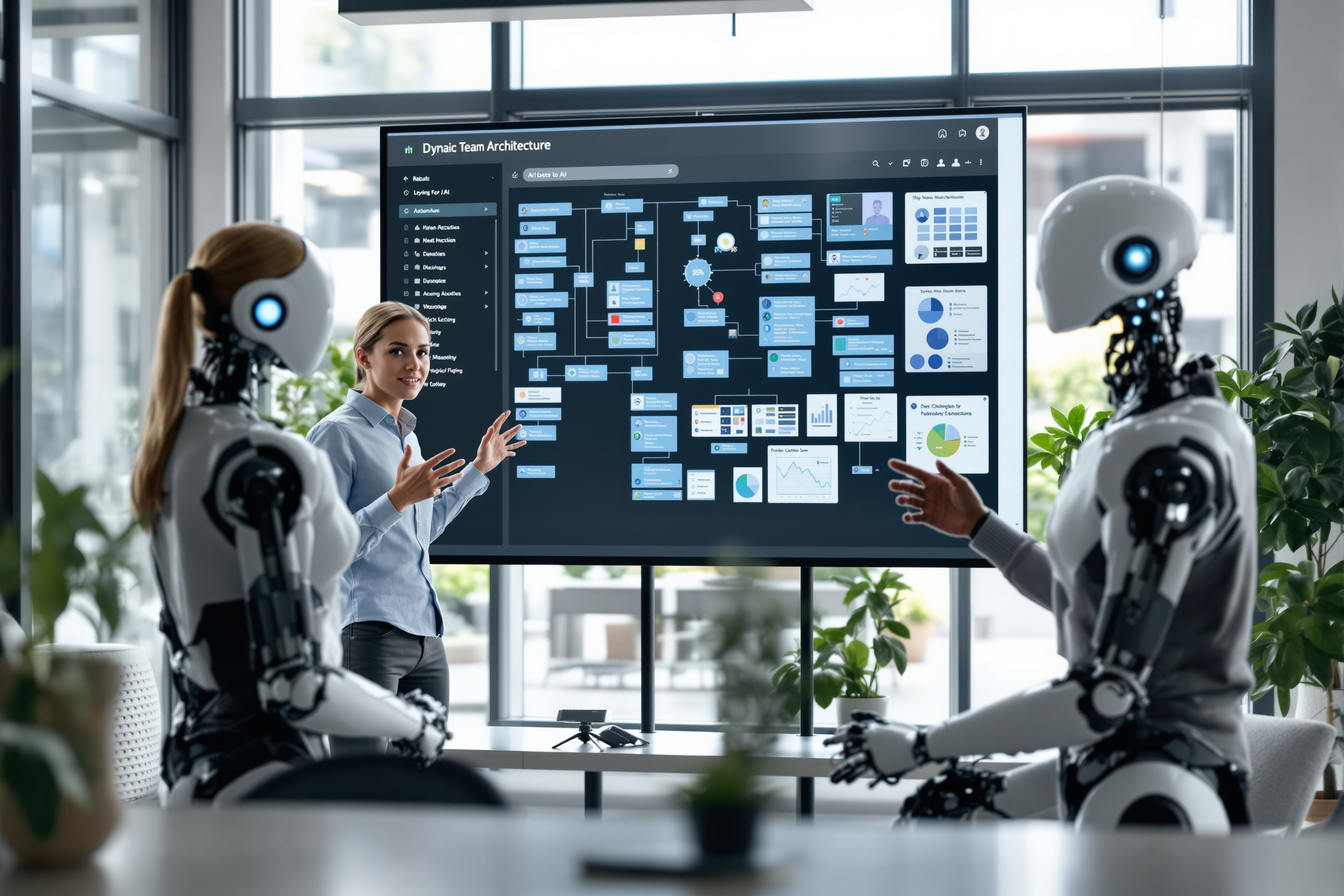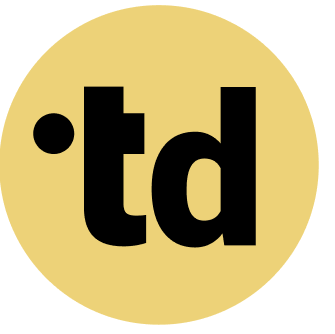Key Takeaways
Teams with clearly defined roles and responsibilities are 53% more efficient, and AI can accelerate the process of achieving this clarity.
Successful AI integration requires a human-in-the-loop approach, as 77% of European workers want to be involved in the design and implementation of new AI technologies.
A data-driven change management strategy, which includes transparently sharing performance metrics, can increase transformation success rates by over 20%.
Teams are the heroes of Many organizations, but they are battling unprecedented chaos and change fatigue. The pressure to adapt is constant, yet only 27 percent of companies in Germany are currently using AI to its full potential. Many leaders see AI as another complex layer, but for the Team Architect, it's a magical tool. By focusing on human-AI collaboration, we can cut through the noise, define crystal-clear roles, and create resilient, high-performing teams. This is the journey from overload to overflow, powered by smart technology and even smarter team design.
Practical Framework for Team Architects
As a Team Architect, you can apply these principles to your organization:
- Map Current State: Document existing roles and responsibilities using a tool like teamdecoder.
- Identify Gaps: Where are roles unclear? Where do humans and AI agents overlap?
- Define Clear Boundaries: Specify which tasks are handled by humans vs. AI agents.
- Create Accountability: Assign clear decision rights for each role.
- Iterate and Improve: Continuously refine based on team feedback.
Confronting the High Cost of Workplace Chaos
The modern workplace is a storm of overload, with the average European worker producing only most as much as their US counterpart. This productivity gap is widened by constant organizational shifts, where a staggering 70 percent of transformation efforts fail. This failure rate highlights a deep-seated resistance to change and a lack of clear strategy. For Team Architects, this data is a call to action, demanding a new approach to avoiding common pitfalls.
Change fatigue is no longer a buzzword; it is a measurable drain on resources, with unclear roles causing the most friction. Teams without role clarity are up to a significant number of less efficient, leading to duplicated work and missed deadlines. This ambiguity creates stress and disengagement, directly impacting the bottom line. Addressing this chaos requires more than another software tool; it requires a new way of structuring work itself.
Achieving Radical Clarity in the Age of AI
The antidote to chaos is clarity, and the strategic use of AI in teams is the fastest way to achieve it. When employees have clearly defined roles, teams become some more effective and individual performance can increase by a significant portion. This isn't a small adjustment; it's a fundamental shift in operational power. For Team Architects, this is the first, most critical step in any successful organizational development plan.
This journey begins by mapping out all roles and responsibilities, a process that AI can accelerate dramatically. Instead of spending weeks in workshops, AI-powered platforms can generate role templates and identify overlaps in minutes. More than many European workers know they need new skills to cope with AI, making this the perfect moment to redefine how work gets done. You can manage AI and human roles from a single, clear viewpoint. This clarity provides the stable foundation needed for the next phase of team design.
Teams Just Wanna Have Fun (With Hybrid Models)
With a clear foundation, Team Architects can begin designing truly effective hybrid teams. This is where humans and AI collaborate, each playing to their strengths, a concept we explore in our guide to designing hybrid workflows. A recent Eurobarometer survey found that 70 percent of Europeans believe AI improves productivity, showing a clear readiness for this new model.
Our Playful Tip: Think of your AI agent integration as adding a new team member with specific skills. To make this work, follow these four steps:
- Define the AI's core function: Will it handle data analysis, draft communications, or manage schedules? Be specific.
- Assign a human counterpart: Every AI agent needs a human-in-the-loop to guide, review, and take accountability.
- Map the workflow: Clearly outline the handoff points between human and AI tasks to prevent bottlenecks. For example, an AI can draft a report from raw data, but a human must approve the final narrative.
- Set success metrics: Measure the integration's impact on task completion time, error rates, or team capacity. A 10 percent reduction in administrative time is a great starting goal.
Deep Dive: The most successful hybrid teams treat AI not just as a tool, but as a collaborator. This requires a shift in mindset from delegation to partnership. By structuring your team this way, you prepare your organization for a future where many new job roles will be directly enabled by AI. Download the "Dream Team Builder" guide to get started: Dream Team Builder guide.
Make Bots and Humans Click: A Data-Driven Transformation
To ensure your new hybrid model succeeds, you must manage the rollout as a data-driven change management initiative. Organizations with data-driven leadership see a a portion of higher success rate in their transformation projects. This means tracking everything from employee sentiment to project velocity. Start by establishing baseline metrics before you introduce new AI agents.
While many Europeans view AI at work positively, many also believe it needs careful management. This highlights the need for transparency. Use data to show the team exactly how AI is helping, such as by reducing tedious tasks by a portion of or freeing up five hours per person per week for strategic work. You can try teamdecoder for free to see how this works. This approach builds trust and turns skepticism into advocacy, which is key to building a hybrid team.
Scaling AI Integration Across the Organization
Moving from a single hybrid team to a company-wide strategy requires a focus on scaling and new leadership skills. In Germany In Germany, nearly half of large companies with over 250 employees are using AI, compared to just a portion of small businesses.hows that scaling is a significant hurdle. A successful strategy requires a centralized playbook for AI agent integration.
The biggest challenge to scaling is the AI skills gap, with most European employers struggling to fill AI roles in 2023. This makes internal upskilling a top priority. Our Playful Tip: Create an internal certification for "Human-in-the-Loop Supervisors." This builds the specific competencies needed to manage hybrid teams effectively. You can learn more by taking our free online course: Start free course. This structured approach to training for AI collaboration ensures your transformation is sustainable.
The Future of Team Architecture is Hybrid
The integration of AI in teams is not a temporary trend; it is the evolution of organizational development. By 2027, intelligent workflows will impact at least a significant number of knowledge work in European companies, potentially doubling productivity. The Team Architects who master this new discipline of designing and scaling with AI assistants will become the most valuable leaders in their organizations.
Ultimately, the goal is to create a system where humans are amplified, not replaced. A full most EU workers want to be involved in how AI is designed and implemented, reinforcing the need for a collaborative, human-centric approach. This is more than just a technological shift; it's a new philosophy of work that balances efficiency with human ingenuity. See our pricing to understand how our platform supports this vision: See our pricing.
Try teamdecoder for free - shape your team and make change feel like play!
#TeamArchitecture #HybridTeam #AIinTeams #Organizational Development
More Links
German Chamber of Industry and Commerce offers insights into how AI is changing economic development in Germany.
PwC discusses how AI can lead to four times productivity growth and 56 percent higher salaries.
ifo Institute shares expectations from companies regarding higher productivity through artificial intelligence.
Federal Ministry for Economic Affairs and Climate Action provides spotlights on economic policy related to artificial intelligence.
Federal Institute for Occupational Safety and Health offers a publications search form on artificial intelligence.
Bertelsmann Foundation reports on the stagnation of AI jobs in the German labor market.
Deutsche Bundesbank provides data and insights on labor productivity.
Deloitte presents an AI study.
Wikipedia offers a comprehensive article on artificial intelligence.
FAQ
How does teamdecoder help with AI integration in teams?
teamdecoder provides the tools for Team Architects to clearly define and visualize every role and responsibility within a team. This creates the foundational clarity needed to successfully integrate AI agents, manage hybrid workflows, and ensure every team member-human or AI-knows exactly what they need to do.
Is it difficult to get started with building a hybrid team?
It can be, but a structured approach makes it manageable. Start with one specific process or workflow to augment with AI. Use a platform like teamdecoder to map the current state and then design the future state with the AI agent included. This iterative process reduces overwhelm and demonstrates value quickly.
What is the biggest challenge when introducing AI to an existing team?
The biggest challenge is often cultural, not technical. Employees may fear being replaced or feel overwhelmed. Overcome this with transparent communication, involving the team in the process (as 77% of workers desire), and focusing on how AI will augment their roles and remove tedious work, not replace their core functions.





